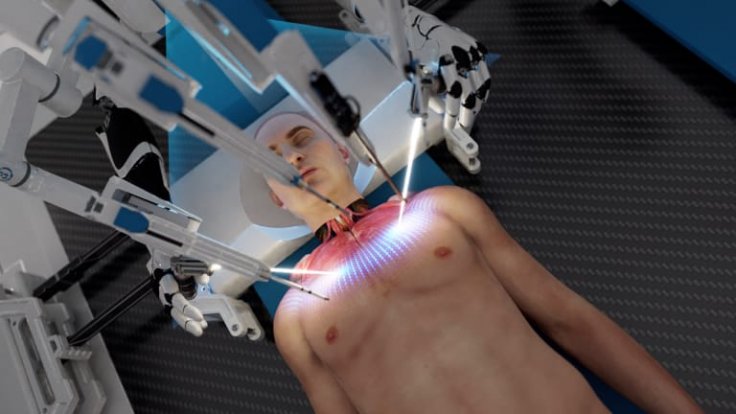In a groundbreaking revelation, BrainBridge, a U.S.-based neuroscience and biomedical engineering startup, has announced its ambitious mission to develop the world's first head transplant system. The announcement was accompanied by a compelling video showcasing a simulated procedure where two autonomous surgical robots transfer a human head from one robotic body to another.

The video, which has captivated viewers, demonstrates the intricate process envisioned by BrainBridge. It starts with precise incisions made by the surgical robots, followed by the delicate detachment of the head from its original body. The head is then seamlessly transferred to a healthy, brain-dead donor body. Throughout the process, advanced AI algorithms guide the integrated robotic platform's robots in reconnecting the spinal cord, nerves, and blood vessels, ensuring a high degree of precision and reducing the risk of brain cell degradation.
BrainBridge's system aims to offer new hope to patients suffering from severe conditions such as stage-4 cancer, paralysis, and neurodegenerative diseases like Alzheimer's and Parkinson's. The core idea is to transplant a patient's head onto a donor body to preserve consciousness, memories, and cognitive abilities.
Social media reactions to the video have been varied. While many are in awe of the technological advancement
and the potential it holds, others have expressed significant ethical and practical concerns. Critics worry about the implications of such a procedure, fearing it could be misused or become a privilege only accessible to the wealthy elite. Comments like "Can't possibly imagine this being used unethically" and "This probably would be only available for the rich" highlight these apprehensions.
Despite the controversy, BrainBridge remains steadfast in its pursuit. The company's project lead, Hashem Al-Ghaili, outlined the intricate roadmap for making their vision a reality. The high-speed robotic systems are designed to minimize brain cell degradation by ensuring a swift and accurate transplant process. The robots' precision is further enhanced by sophisticated AI, which meticulously guides the delicate reconnection of the spinal cord, nerves, and blood vessels.
The video not only illustrates the technical feasibility of the procedure but also serves as a powerful visual aid to communicate the complex process to both the medical community and the general public. By showcasing the simulated procedure, BrainBridge aims to demonstrate that their approach is rooted in scientific rigor and not just a fantastical notion from science fiction.
The potential benefits of BrainBridge's head transplant system are immense. For patients with debilitating conditions, this could mean a second chance at life with preserved cognitive functions. However, the ethical debates and concerns about accessibility and equity will continue to challenge the project's acceptance.
As the medical community and the public digest this bold announcement, BrainBridge's innovative approach to solving some of the most challenging medical conditions remains a topic of intense discussion. The startup's commitment to pushing the boundaries of medical science, illustrated vividly through their simulation video, underscores a new era in biomedical engineering. The journey ahead is fraught with challenges, but BrainBridge's vision could potentially redefine the future of medical treatments and patient care.









